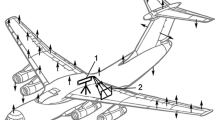Abstract
A generalized method is presented for analyzing the fringe patterns frequently encountered in experimental mechanics. By utilizing digital-image-processing and computer-graphics techniques, a set of menu-driven software is developed for interactively implementing the fringe processing. Tests of this software on the images obtained experimentally by photoelasticity, holographic interferometry and speckle interferometry demonstrate its usefulness. Good agreement between the experimental and theoretical results is established.
Similar content being viewed by others
References
Muller, R.K. andSaackel, L.R., “Complete Automatic Analysis of Photoelastic Fringes,”Experimental Mechanics,19 (7),245–251 (1979).
Seguchi, Y., Tomita, Y. andWatanabe, M., “Computer-Aided Fringe Pattern Analyzer—A Case of Photoelastic Fringe,”Experimental Mechanics,19 (10),362–370 (1979).
Mendenhall, F.T., “Computer Aided Analysis of Photoelastic Images,” PhD Thesis, Univ. of Illinois (1981).
Chambless, D.A. andBroadway, J.A., “Digital Filtering of Speckle-Photography Data,”Experimental Mechanics,19 (8),286–289 (1979).
Nakadate, S., Yatagai, T. andSaito, H., “Electronic Speckle Pattern Interferometry Using Digital Image Processing Techniques,”Appl. Opt.,19 (11),1879–1883 (1980).
Ineichen, B., Eglin, T. andDandliker, R., “Hybrid Optical Electronic Image Processing for Strain Measurements by Speckle Photography,”Appl. Opt.,19 (13),2191–2195 (1980).
Choudry, A., “Digital Holographic Interferometry of Convective Heat Transport,”Appl. Opt.,20 (7),1240–1244 (1981).
Gasvik, K.J., “Moiré Technique by Means of Digital Image Processing,”Appl. Opt.,22 (23),3543–3548 (1983).
Justusson, B., “Noise Reduction by Median Filtering,” Proc. 4th Int. Conf. Pattern Recognition, 502–504 (1978).
Niblack, W., An Introduction to Digital Image Processing, Prentice Hall Int, Englewood Cliffs, NJ (1986).
Gonzalez, R.C. andWintz, P., Digital Image Processing, Addison-Wesley, Reading, MA (1987).
Pratt, W.K., Digital Image Processing, Wiley and Sons, New York (1978).
Dally, J.W. andRiley, W.F., Experimental Stress Analysis, McGraw-Hill, New York (1978).
Ranson, W.F., “Use of Holographic Interferometry to Determine the Surface Displacement Components of a Deformed Body,” PhD Thesis, Univ. of Illinois (1971).
Kinariwala, V.R., Peters, W.H., Ranson, W.F. and Swinson, W.F., “Speckle Patterns for Measuring Displacements Described as Diffraction Gratings,” Proc. 12th Annual Mtg. of Soc. of Eng. Sci., 413–421 (1975).
Author information
Authors and Affiliations
Rights and permissions
About this article
Cite this article
Chen, T.Y., Taylor, C.E. Computerized fringe analysis in photomechanics. Experimental Mechanics 29, 323–329 (1989). https://doi.org/10.1007/BF02321416
Received:
Revised:
Issue Date:
DOI: https://doi.org/10.1007/BF02321416




